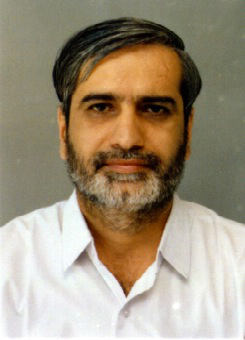 The rapid changes in the textile and clothing supply chain globally have forced top textile export countries to review their future strategy and action plans considering the buyers’ likings, dis-likings, limitations and compulsions in mind. An Expert Committee, headed by Shri Ajay Shankar (Member Secretary of the National Manufacturing Competitiveness Council) had been constituted by the Ministry of Textiles to make fresh recommendations. The Committee, on July 28, 2014, submitted to the textile minister what is termed as “The draft Vision, Strategy and Action Plan 2024-25” after a detailed process of stakeholder consultations across the entire value chain.
The rapid changes in the textile and clothing supply chain globally have forced top textile export countries to review their future strategy and action plans considering the buyers’ likings, dis-likings, limitations and compulsions in mind. An Expert Committee, headed by Shri Ajay Shankar (Member Secretary of the National Manufacturing Competitiveness Council) had been constituted by the Ministry of Textiles to make fresh recommendations. The Committee, on July 28, 2014, submitted to the textile minister what is termed as “The draft Vision, Strategy and Action Plan 2024-25” after a detailed process of stakeholder consultations across the entire value chain.
The draft paper begins with the premise that when Vietnam and Bangladesh could achieve an export growth rate of 30% and 18% respectively, “there is no reason why India, provided it takes the necessary steps, cannot achieve 20% growth in exports over the next decade.” Also, the Committee feels that “in the domestic market, sustaining an annual growth rate of 12% should not be difficult.” In other words, the Committee has set an export target of US$ 300 bn (= 20% CAGR) for textile and apparel by 2024-25, which according to the draft paper would equal to a market share of 20% of the global textile and apparel trade from the present level of 5%. Similarly, the domestic market is targeted at US$ 350 bn by 2024-25 from the current level of about US$ 100bn @ 12% CAGR. i.e. Total industry size = US$650bn).
The fulfillment of above ‘Vision’ calls for adopting a clearly defined ‘Strategy’. It cannot be achieved with “business-as-usual approach or attitude.” I am giving below the 10-point Strategy recommended in the draft vision with my editorial comments.
- Achieving Scale across the Value Chain. This means revisit the past. Shift from ‘decentralized’ to the ‘organized’. Pump in large scale investment and set up huge world class manufacturing units for the “requisite scale for success.”
- Attract Investment into the Sector : An investment of US$ 120bn is needed to enhance industry size to US$650bn by 2024-25. The secrets (if any) of managing funding of this level are known to everyone who is expected to implement the proposed strategy.
- Skill, Quality and Productivity : An additional skilled manpower of 35 million would also be needed. Unfortunately, we do not have the culture of either receiving or imparting training for achieving a reasonable level of skill. The demand supply gap will only make the country less competitive.
- ‘Reforming Labour Laws’ is a known and widely discussed area.
- Structural Shift with increasing Value Addition in India : The strategy envisages making India “a net exporter of finished products only” by 2024-25.
- Diversification of Exports in terms of Products and Markets. This is obvious.
- Promoting Innovation and R&D. I am trying to understand this point especially in view of ‘nearly’ failed TRAs in the country.
- New Approach towards Handloom/Handicrafts : Look beyond traditional items.
- Partnership with State Government. (Any way, we have business friendly govt.).
- Reengineering of Existing Schemes and Policies.
The Action Plan in the draft vision outlines broad ideas and suggestions (further sub-strategies) to enable implementation of the above strategies!
I am sure the new textile policy will be announced soon given the fast track-record of our PM. I wish everyone good luck and happy 2024-25, in advance.
G.D. JASUJA
Managing Editor





